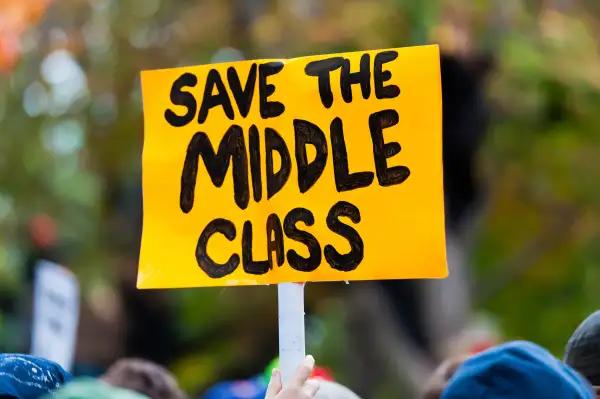Why The Lowest Paid Workers Are Getting a Raise—And The Middle Class Isn't

If you're a working adult, you probably haven't received much of a raise in recent years. Earnings growth has declined dramatically since 2007, and wages bounced back only 2% this year, barely keeping pace with inflation. In October, wage growth was essentially static.
But we may be seeing light at the end of the tunnel, at least for some employees. Over the weekend, payroll processing firm ADP released data showing that the average hourly pay for low-wage workers -- that is, those making less than $20,000 a year -- increased by 5.4% in the last year, and that workers earning between $20,000 and $50,000 saw pay jump 4.9% on average.
As USA Today noted on Sunday, ADP's methodology tends to overestimate earnings growth because it tracks only employees of businesses that can afford to contract with the company. The firm also reported that earnings for all Americans were up 4.5% in the third-quarter year-to-date; more than double the increase was reported by the Bureau of Labor Statistics in October for 2014.
But while ADP may have overestimated earnings growth among low-wage Americans, that doesn't mean that group isn't getting better raises than the rest of the population. The paper also observed that data from the BLS showed the bottom 10% of earners received a 3% hike in wages for the year ending on September 30, compared to a 0.5% raise for the 90th percentile.
Why do low-wage workers seem to be getting raises when the middle-class is not? According to Eugenio Alemánm, a senior economist at Wells Fargo, the answer is employment polarization. As the St. Louis Federal Reserve explains, this phenomenon describes how the automation of many routine tasks has decreased demand for middle-skill, middle-income labor, while increasing demand for both low-skill, low-wage workers and high-skill, high-wage workers. This trend was exacerbated by the great recession, and resulted in a hollowing out of the American labor force.
Higher wages for low-skill workers simply reflects higher demand for that particular class of laborer. High-wage employees have also seen a disproportionate increase in earnings during the recession compared to the middle-class.
"One of the characteristics of the current economic recovery is that we are seeing a lot of jobs in the very, very low levels of income, very low paying jobs, and very strong movement in the high paying jobs," said Alemánm. "Those are the two sectors that seeing some upwards pressure on wages and this data is a confirmation of that."
"Middle income jobs are not being offered in this economic recovery, so there is no pressure on those salaries," added Alemánm. "The type of jobs that are being offered today"—which he says mainly exist in the leisure, hospitality, and retail industries—"are not conducive to having middle-income earners."
Will the middle-class ever see some relief? Alemánm says yes, recent job growth is likely to exert upward pressure on wages across the board -- but it's hard to tell when that will happen for the majority for workers. "At some point, it has to change," he predicts. "You'll see some spillovoer into middle-income wage earners. That is the third leg we are waiting for."
